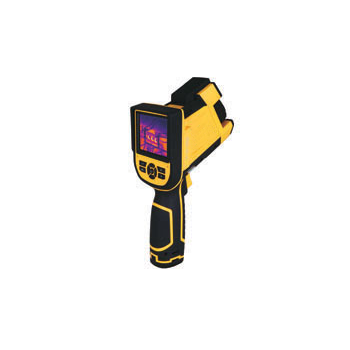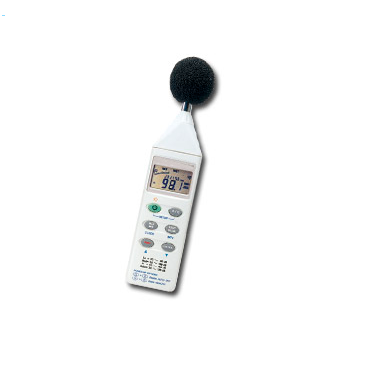Description
Overview
GAOTek PH Meter with mV and Temperature (Accurate, Auto Calibration) is designed to measure the oncentration of solution’s mV and pH value and be calibrated with 2 points auto calibration. This pH meter has large screen with blue backlight, double digital LCD.It provides user preference manual and automatic temperature compensation mode. It determines the electrode performance automatically and improves the work efficiency. It is applicable to the laboratory of universities, research institutes, environmental monitoring, industrial and mining enterprises, etc.
Key Features
- LED digital display with blue background.
- Can display temperature value, PH value or potential value of MV at the same time
- Automatic and Temperature Compensation
- 1 to 2 point auto calibration
- Determine the electrode performance automatically, improve the work efficiency
- Low price, incredible value
- Simple effective
Technical Specifications
| pH | |
| Range | 0 ~ 14.00 pH |
| Resolution | 0.1 / 0.01 pH |
| Accuracy | ± 0.01 pH ± 1 digit |
| Input Resistance | >1 x 1012 Ω |
| Stability | ± 0.01 pH ± 1 digit / 3 hours |
| Temperature Compensation | 32 °F to 212 °F (0 °C to 100 °C), auto/manual |
| mV | |
| Range | -1999 mV ~ 0 ~ 1999 mV |
| Resolution | 1 mV |
| Accuracy | ± 1 mV ± 1 digit |
| Temperature | |
| Range | 32 °F to 211.82 °F (0 °C to 99.9 °C) |
| Resolution | 32.18 °F (0.1 °C) |
| Accuracy | 32.54 °F ± 1 digit (0.3 °C ± 1 digit) |
| Others | |
| Input Current | 2 x 10-12 A |
| Power Supply | AC 220 V ± 22 V, 50 Hz ±1 |
| Dimension | 11.81 in × 7.87 in × 3.54 in (300 mm × 200 mm × 90 mm) |
| Weight | 2.92 lbs.(1.5 kg) |
| Relative Humidity | ≤ 85 % |
| Operating Temperature | 41 °F to 104 °F (5 °C to 40 °C) |
Additional Information:
Instrument Structure
Exterior structure

- Chassis
- Keyboard
- Screen
- Multi electrical holder
- Electrode

6.Electrode plug
7.Reference electrode connection
8.Tem Electrode outlet
9.Fuse
10.Power
Keyboard explanation
- Press Key “pH/mV” once for measuring “pH”: Press another time for measuring “mV”.
- Key “Stand”. Press Key “▲”For adjustment localization value rise. Press “▼” for adjustment localization value down.
- Key “slope”. Press the upper “▲” to adjust the slope value increased; Press the lower “▼” to adjust the slope values decreased
- Key “Temp”. Press the upper “▲” to regulate the temperature rise ; Press the lower “▼” to adjust the temperature
- Key “enter”. Press the key to confirm the operation. Besides, turn the power switch on while pressing this key can restore the original state of the instrument.
Instrument case Accessories:


11 Q9 Short plug
12 PH Composite Electrodes
13 Electrode protection set
Preparation

- Keep the multi-electrical holder into the Multi-function electrode holder socket, the pH composite electrode installed electrode rack, Unplug the stand pull down the rubber of electrode to expose the sleeve hole.
- Clean electrode with distilled water
Calibration
pH meter should be calibrated before use. Calibrate once in a day if the meter is in continuous use.
- Unplug Q9 short-circuit plug (11) from electrode socket (6)
- Insert composite electrode (12) into electrode socket (6)
- If no composite electrode, insert glass electrodes plug into the electrode socket (6).Connect reference electrode to the reference electrode (7);
- Turn on the power switch, press “pH/mV” button make it into the pH measurement condition.
- Press “Temp” button to display the solution temperature (at this time temperature indicator light), then press “Yes” button, the instrument returns to pH measurement mode.
- Insert the electrode washed with distilled water into the pH = 6.86pH standard buffer solution ,when the reading is stable press the key” Stand”. Then press the “Yes” button the instrument is in pH measuring state. The relationship between buffer solution PH value and temperature can be referred in the relationship table.
- Insert electrode cleaned with distilled or de ionized water into the pH = 4.00 (or PH = 9.18; or pH = 6.86 pH, but cannot the same with calibration buffer solution pH) standard buffer solution. Press the k “Model” button twice, then press the “Yes” button, the instrument is in pH measuring state, pH indicator stops flashing, calibration completed.
- After cleaning the electrode with distilled water, solution measurement may carry on.If the measuring process is not normal, turn off the power and press “Yes” button, and then turn on the power, measuring process restore the original state of the instrument. Restore the initial state of the instrument, and then re-calibrate it.
Note: If the instrument is calibrated, do not press the “mode” button. If the user unknowingly touch the key, do not press the “confirm” button, instead continuously press the “Model” button, the instrument can be re-entering the pH measurement, without further calibration.For the first time use the calibration buffer solution with pH = 6.86 for the first time and close to the pH values of solution being measured. If the measured solution is acidic, the buffer solution selected should be pH = 4.00; and for the alkaline solution, PH. = 9.18.
PH Value Measurement:
Instrument calibrated can be used to measure solution; Specific steps are as per the following:
- Solution being measured has the same temperature with calibrated solution, steps are as follows:
- Clean electrode forehead with distilled water, and clean again with the solution being measured.
- Plunge the electrode in to the solution being measured, stir with a glass rod making the solution to be even the pH value displayed on the monitor
- Solution being measured has different temperature with calibrated solution, the steps are as follows
- Clean electrode forehead with distilled water, and clean again with the solution being measured.
- Measured with a thermometer the temperature of the solution being measured.
- Press “Temp” button, the instrument displays the temperature of the measured solution, and then press “Yes” button.
- Plunge the electrode in to the solution being measured. Stir with a glass rod making the solution to be even, then read the solution pH.
Measurement of electrode potential (mV)
- Put the ion selective electrode (or metal electrode) and reference electrode holder on electrode stand;
- Clean electrode forehead with distilled water, and clean again with the solution being measured.
- Keep the ion electrode to the electrode socket plug (6)
- Connect reference electrode to the interface (7) at the rear of instrument
- Plug the two types of electrode into solution. When the solution is even, then you can read the electrode potential (mV) values
- If measured signal beyond instrument measuring range, the screen display is not bright.
Relationship table between buffer solution pH value and temperature
| °F(°C) | 0.05 mo1/kg
Potassium hydrogen phthalate potassium acid |
0.025 mo1/kg
Phosphate mixture |
0.01mo1/kg
Sodium tetra borate |
| 41(5) | 4.00 | 6.95 | 9.39 |
| 50(10) | 4.00 | 6.92 | 9.33 |
| 59(15) | 4.00 | 6.90 | 9.28 |
| 68(20) | 4.00 | 6.88 | 9.23 |
| 77(25) | 4.00 | 6.86 | 9.18 |
| 86(30) | 4.01 | 6.85 | 9.14 |
| 95(35) | 4.02 | 6.84 | 9.11 |
| 104(40) | 4.03 | 6.84 | 9.07 |
| 113(45) | 4.04 | 6.84 | 9.04 |
| 122(50) | 4.06 | 6.83 | 9.03 |
| 131(55) | 4.07 | 6.83 | 8.99 |
| 140(60) | 4.09 | 6.83 | 8.97 |
Pollutants and detergent reference list
| Pollutants | Detergent |
| Inorganic metal oxide | Dilute acids below 1 m01/L |
| Organic grease-like substances | Dilute detergent (alkaline) |
| Resin macromolecule substance | Alcohol, acetone, ether |
| Protein blood cell sediment | 5% pepsin +0.1 mo1 / L HC1 solution |
| Pigment substances | Dilute bleach, hydrogen peroxide |



